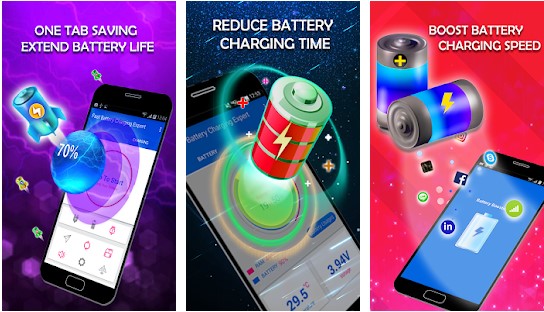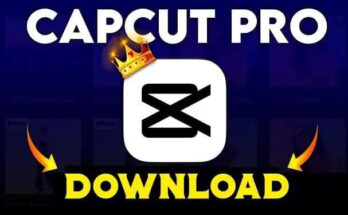Smartphones have become an inseparable part of modern life, powering communication, entertainment, productivity, and even finance. But as phones grow more powerful with bigger screens, advanced processors, and 5G/6G connectivity, their energy consumption also rises. This makes charging technology just as important as battery size. In 2025, mobile fast charging is emerging as a game-changer, promising to reduce charging times from hours to minutes and reshaping how we use our devices daily.
In this article, we’ll explore the evolution, current trends, and future of fast charging, and why it is one of the most important innovations in smartphone technology today.
What Is Mobile Fast Charging?
Mobile fast charging refers to advanced charging technology that delivers higher wattage (power) to a smartphone battery, significantly reducing the time required to recharge it. Unlike traditional 5W or 10W chargers that could take hours, modern fast chargers deliver anywhere between 30W to 240W, allowing devices to reach 50–100% charge in just a few minutes.
The science behind fast charging lies in three key aspects:
- Higher Power Delivery (Wattage): Increasing voltage and current within safe limits.
- Optimized Charging Protocols: Smart chips regulate energy flow to prevent overheating.
- Battery Innovations: Graphene, silicon-anode, and multi-cell battery designs that handle faster charging without degradation.
Evolution of Smartphone Charging
- Early 2000s: Charging was slow and standardized at 5W. A full charge could take 3–4 hours.
- 2015–2018: Brands like Qualcomm, Oppo, and OnePlus introduced fast charging (18W–30W), cutting charge times in half.
- 2019–2022: Fast charging crossed 65W–120W, enabling smartphones to charge fully in under 40 minutes.
- 2023–2024: Ultra-fast charging technologies reached 200W+, where some flagship models achieved a full charge in just 10 minutes.
- 2025: We are entering the era of smart charging ecosystems, where speed, efficiency, and battery health are optimized simultaneously.
The State of Fast Charging in 2025
Today, mobile fast charging has evolved into a multi-dimensional ecosystem involving hardware, software, and AI. Here’s what defines charging in 2025:
1. Ultra-High Wattage (200W–300W)
Manufacturers are pushing the limits, with some prototypes already demonstrating 300W charging capable of fully charging a 5000mAh battery in under 8 minutes.
2. Universal Standards
While different brands earlier had proprietary solutions (VOOC, Warp Charge, Quick Charge), USB-C Power Delivery (PD) is now becoming the global standard. This unification makes fast charging more accessible across devices.
3. AI-Powered Smart Charging
Artificial Intelligence in smartphones now monitors user behavior, charging habits, and battery health to regulate charging speeds, extend lifespan, and reduce heat.
4. Wireless Fast Charging
Once limited to 5W–15W, wireless charging in 2025 has advanced to 80W–120W, offering nearly the same speed as wired charging without cables.
5. Eco-Friendly Innovations
Brands are introducing energy-efficient adapters that reduce power waste, while new battery materials are designed to withstand thousands of charge cycles without performance loss.
Benefits of Mobile Fast Charging
1. Time Efficiency
The biggest benefit is obvious: less waiting. Imagine plugging in your phone for 5 minutes before heading out and getting 50% battery—fast charging makes this a reality.
2. Convenience
Travelers, professionals, and gamers benefit from shorter charging times, eliminating the anxiety of carrying power banks or hunting for outlets.
3. Supports Larger Batteries
As smartphones include bigger batteries (5000mAh–6000mAh) to support high-performance tasks, fast charging ensures these don’t take hours to refill.
4. Improved Productivity
With devices always ready to use, professionals enjoy uninterrupted workflows, while gamers experience longer playtime with quick top-ups.
5. Future-Ready Ecosystem
Fast charging technology in 2025 extends beyond smartphones to laptops, tablets, wearables, and even EVs, creating a unified charging ecosystem.
Download
Challenges in Mobile Fast Charging
While the benefits are impressive, the future of fast charging also comes with challenges:
- Heat Management: High wattage can produce excess heat, impacting battery health.
- Battery Lifespan: Frequent fast charging may reduce long-term capacity if not managed by AI systems.
- Charger Compatibility: Not all fast chargers work universally, though USB-C PD is solving this.
- Energy Consumption: Faster charging consumes more electricity, raising sustainability concerns.
- Cost: Ultra-fast charging adapters and cables may add to the cost of smartphones.
Innovations Powering the Future
The fast charging industry is not standing still. Here are some key innovations defining 2025 and beyond:
1. Graphene Batteries
Graphene-based batteries charge faster, generate less heat, and last longer than traditional lithium-ion batteries.
2. Dual-Cell Technology
Splitting a battery into two smaller cells allows faster parallel charging without overheating.
3. GaN (Gallium Nitride) Chargers
GaN technology makes chargers smaller, cooler, and more energy-efficient while supporting ultra-fast charging.
4. Smart Charging Algorithms
AI-driven software ensures optimal power delivery, protecting battery health while offering maximum speed.
5. Cross-Device Charging
With USB-C and wireless standards, one charger can now power smartphones, laptops, tablets, and even IoT devices efficiently.
Mobile Fast Charging in Daily Life (2025 Scenarios)
- Morning Routine: Plug in your phone while brushing your teeth, and it’s already 80% charged.
- Business Meetings: A quick 5-minute charge before a meeting ensures hours of uninterrupted video calls.
- Travel: Airport layovers no longer mean sitting by a charging station for hours.
- Gaming: Players can recharge during a snack break and return with full battery power.



